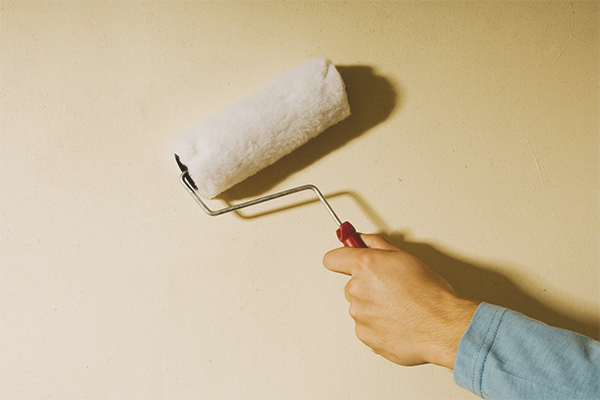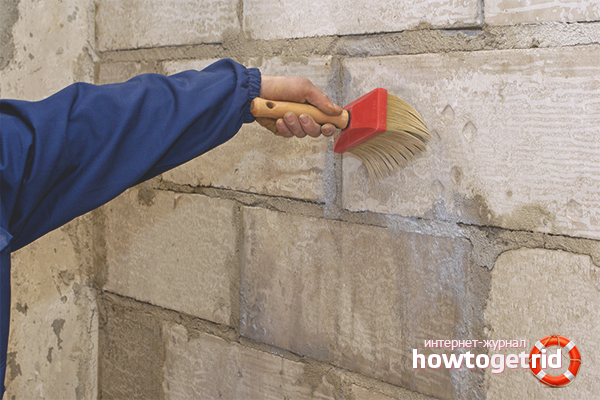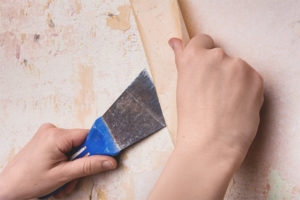The content of the article
Watching various TV shows about repairs, as well as reading thematic articles on the Internet, we often see that when working with walls, it must first be primed. At the same time, whatever the finish (wallpaper, paint, tile), the pre-wall is always primed. This is certainly an important stage in the repair, which can not be neglected. We will definitely talk about how to do it. But first, let's find out why we need to prime the walls.
Why primed walls
This section will be useful not only to those who for the first time decided to start repairing their own homes, but also to those who have already had to transform the rooms in the house. After all, many do not ask about the significance of the primer, but in vain.
It has already been mentioned above that the walls are primed before painting, applying plaster and all other finishing materials. So, this is done in order to increase the service life of the latter.The fact is that the primer improves the adhesion properties of the coating. It penetrates deep into the pores of the wall, fills them and glues dust particles together. Thus, before applying the final coating, the wall becomes more uniform and durable.
In addition to increasing the service life of materials, the primer has the following advantages:
- Reduces the consumption of glue, which is very useful when sticking wallpaper
- Reduces the smell of paint and allows you to apply light and bright colors on dark surfaces
- Hides spots on the surface
As you can see, the advantages of the primer abound, which can not be said about the shortcomings that are not. Therefore, the repair is not worth it to neglect. However, it is important to know how to properly ground the walls. And it is about this that will be discussed further.
Primer Tools
To evenly and thoroughly primed the walls will require a small set of tools, namely:
- The roller with average pile + the telescopic handle for its lengthening;
- Capacity for primer;
- Paint brush
Preparatory work
First of all, you need to completely rid the wall of the old coating.If it was a wallpaper, then care should be taken to completely eliminate residual glue. Sometimes completely clean the material "on dry", with a spatula is quite problematic. Therefore, the wallpaper can be pre-wet. But if, with glueing, you managed to get glue, which tightly chained the wallpaper to the wall, then ordinary water may be impotent. In this case, you should go to a specialty store and buy a wallpaper remover, before which even the highest quality glue will not stand.
In addition, there are still some nuances that should be considered. Firstly, it is impossible to ground walls that have recently been repaired. Before proceeding to this stage, you need to wait until the plaster and putty dry completely. Secondly, make sure that the walls do not have traces of whitewashing and fungus. In the first case, this will lead to peeling wallpaper. Well, with the fungus, and so everything is clear. If it is not removed, it will continue to spread. Therefore, the surface should be treated with special means.
Wall priming
Before proceeding to work, you should decide on the type of primer. Acrylic primer works best for plastered and plastered walls, and alkyd for wood surfaces. These 2 options are the most popular, however, there are other types, namely:
- Shellac primer - suitable for knotted wooden surfaces.
- Polystyrene primer is suitable for both wood and plaster. However, the use of this tool in residential areas is not recommended, since it consists of substances that emit harmful vapors into the air.
Have you noticed that all the proposed options are applied on plastered concrete and wooden surfaces? If so, then the question of the need to primer metal structures may arise. In fact, even such walls need to be processed. For this purpose, glyptal, perchlorovinyl types of primers are used.
In addition, the primer is liquid and dry. In the first case, it is already fully prepared for application. Dry material will first need to self-dilute with water. It is important to strictly follow the instructions.
Having decided on the choice, you can go directly to the process, which is not very complex. The primer is poured into a special construction bath, which has a ribbed coating. This will squeeze out excess liquid from the roller.
So, mount the roller to the telescopic handle, put it in the tub, scroll a couple of times and squeeze. After that, begin to wield a roller on the wall. Do not forget that the walls absorb the primer in different ways. For porous coatings, it will be required 1.5–2 times more than this construction liquid. Anyway, it is recommended to ground any wall twice. However, the second stage should be carried out only after the first layer of primer is completely absorbed and dry: from 12 to 24 hours.
Working with a roller is easy and fast, but in the corners it is still better to use a brush. In addition, if you value every minute, we will reveal the chip, how to speed up the process a little. When wielding with a roller, you must first prime only the upper half of the wall, and then the lower one. Thus, it is not necessary to shift the roller every meter. Accordingly, the speed of work increases.Do not forget that all areas should be evenly moistened with a primer. Therefore, every shred of the wall should be processed, and the dry parts of the coating should not be visible at all.
Primed walls should be smooth and slightly sticky after drying. After drying, you can glue wallpaper, apply paint and other materials. In this case, you can not be afraid that the appearance will soon deteriorate.
Video: how to properly ground




 1 votes, on average: 4,00 out of 5
1 votes, on average: 4,00 out of 5







To send